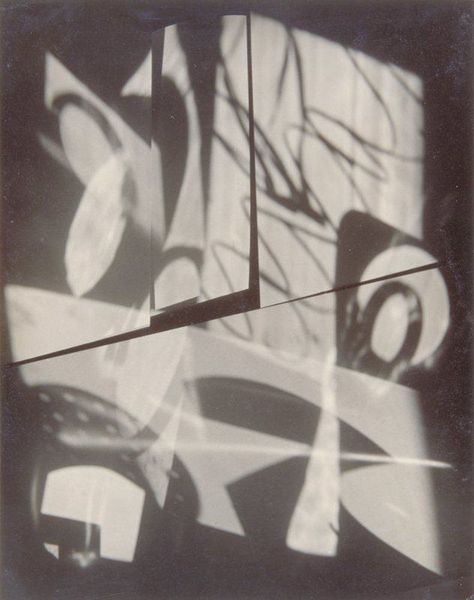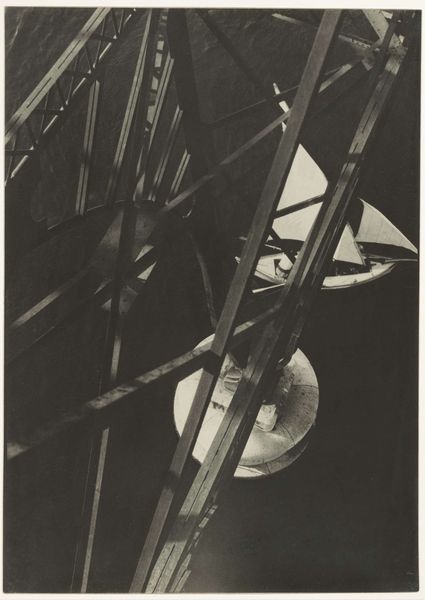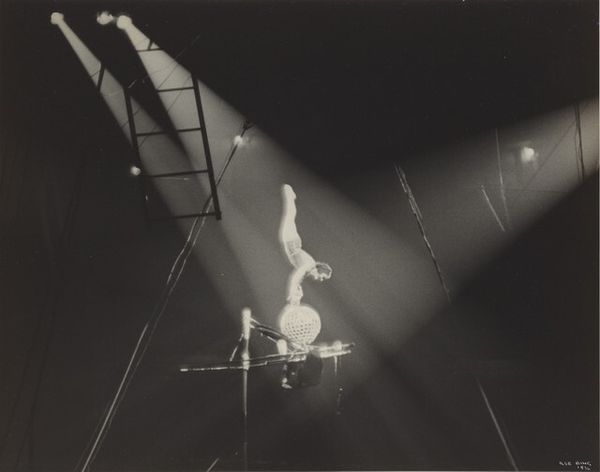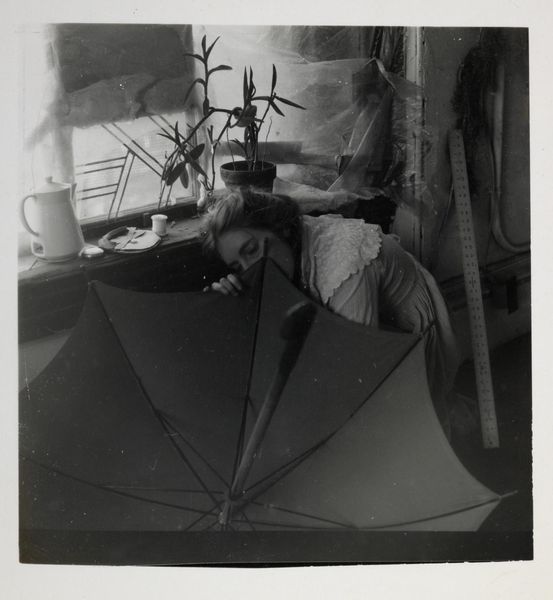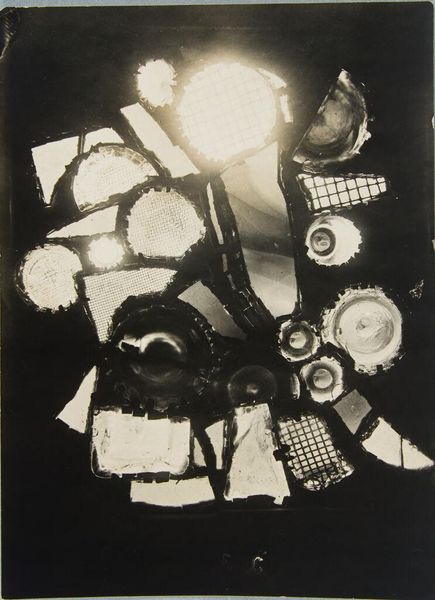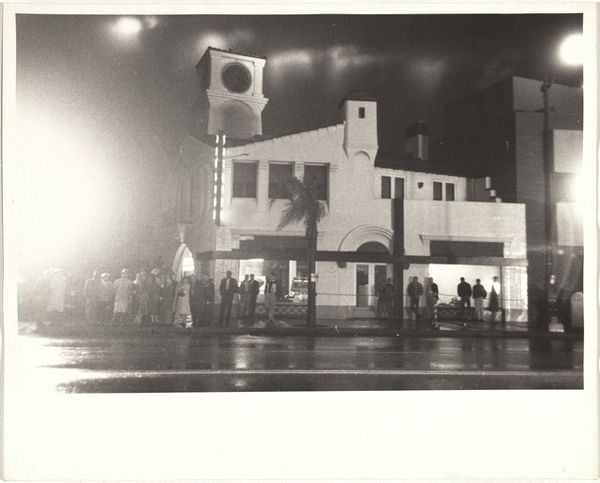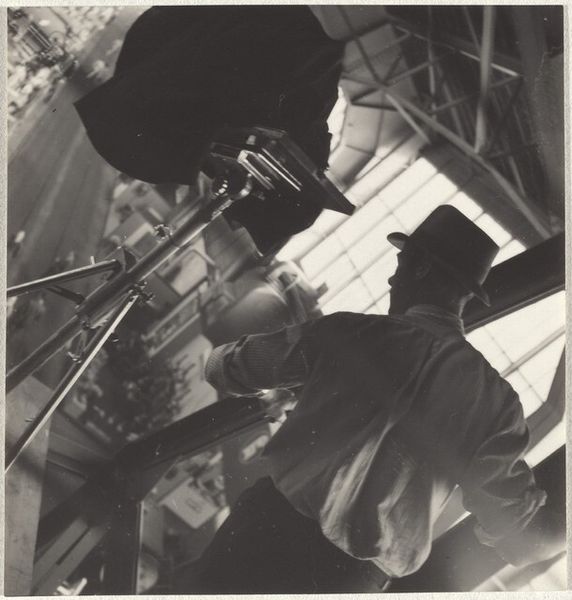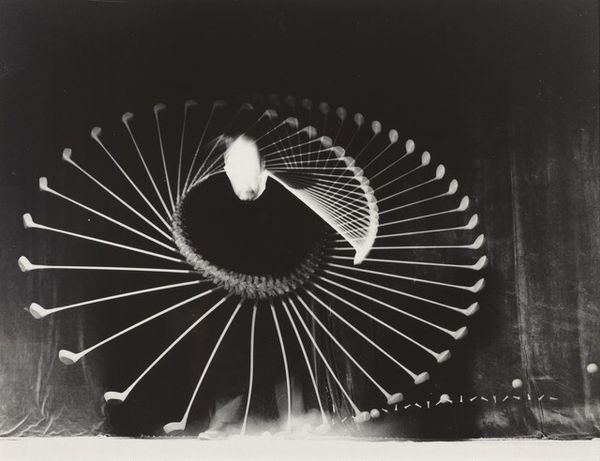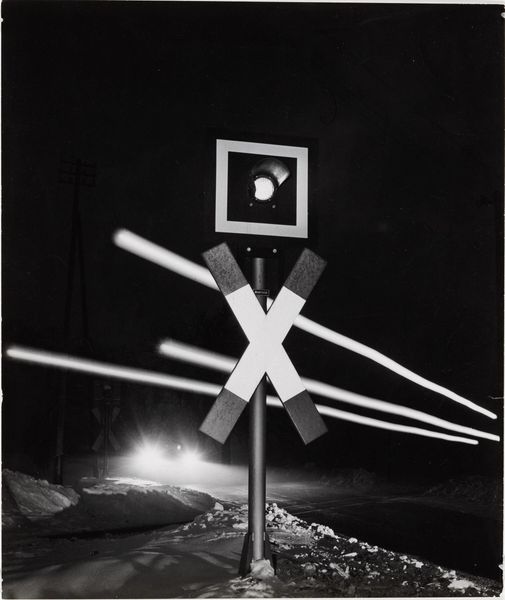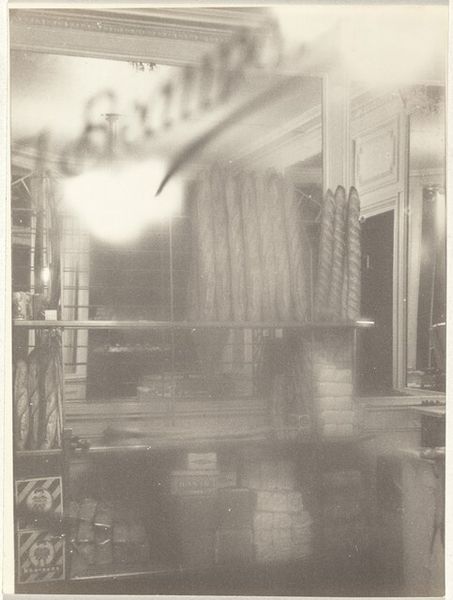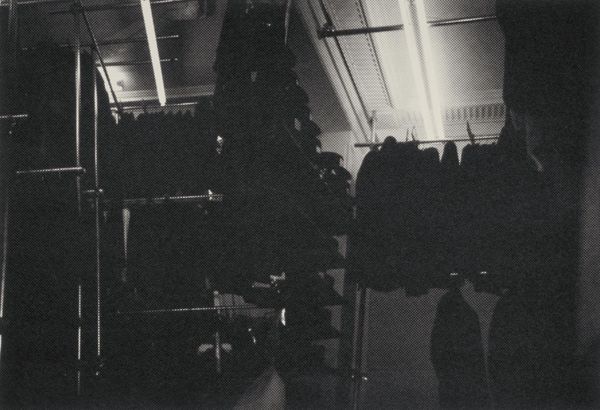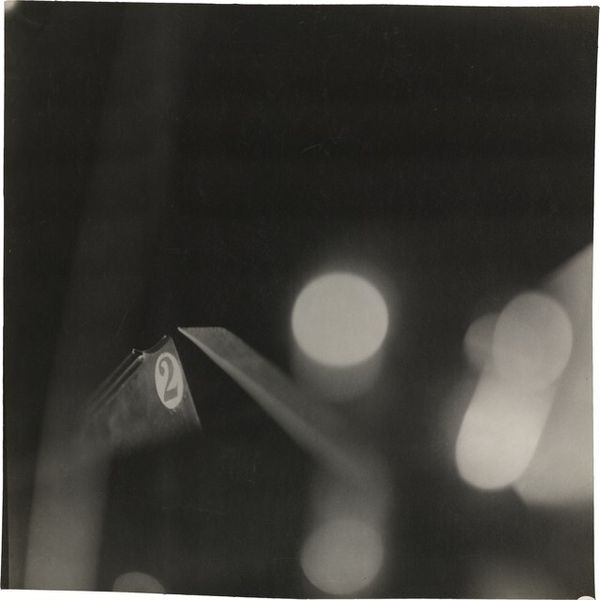
performance, assemblage, photomontage, photography, installation-art, happening
#
abstract-expressionism
#
performance
#
conceptual-art
#
black and white photography
#
assemblage
#
photomontage
#
photography
#
new-york-school
#
monochrome photography
#
installation-art
#
happening
#
monochrome
#
monochrome
Dimensions: image: 24.1 x 16.5 cm (9 1/2 x 6 1/2 in.) sheet: 25.5 x 20.5 cm (10 1/16 x 8 1/16 in.)
Copyright: National Gallery of Art: CC0 1.0
Curator: Looking at this photograph of Allan Kaprow's "Courtyard," created in 1962, one can’t help but feel a sense of enigmatic spectacle. It captures an event, a happening perhaps. Editor: My immediate impression is unease. The stark monochrome, the disproportionate, almost menacing object suspended in mid-air. There’s a feeling of intrusion, of something looming. What am I seeing? Curator: What you are seeing in many respects is Kaprow playing with boundaries of what art could be. "Courtyard," typical of his happenings, took place in outdoor or liminal urban spaces and defied easy categorization as either performance, assemblage or installation. The historical moment of Abstract Expressionism meets Conceptual Art head on. Editor: It looks ceremonial almost. That orb-like structure on what appears to be a draped plinth...the balloon-like structure above... there's a definite sacred element here. Is he poking at tradition, twisting it somehow? Curator: Kaprow aimed to challenge traditional art institutions, removing art from galleries and museums and inserting it into the everyday experience. His works often involved audience participation. In his work, you witness what could be the institutionalized art, as some 'sacred' happening, that might be destroyed. Editor: That makes perfect sense. And consider this too – the monochromatic palette forces us to focus on form and texture. The contrasts highlight the roughness of the balloon-like creation with the architectural façade as the background, almost as to mark one new structure versus old one, in ruins and becoming irrelevant. Is it really ruins, or just being in decay? Curator: Precisely. He also challenged authorship, ceding control of the artwork's unfolding to chance and participant interaction. By involving audience participation, Kaprow transformed the viewer into an active agent within the art-making process. This in many ways democratized what "art" was for him and who could claim stake within this process. Editor: There is some interesting iconography that goes against classic values. It suggests something of a commentary of transformation. We have this plinth with draped elements that remind us of Greek pillars holding ruins, something of what existed at some point, against some organic structures from contemporary building, that suggests something in progress of transformation that never finishes. What if anything Kaprow would say to these statements? Curator: Kaprow himself moved away from fixed meanings. By not being in charge of this “event” as such, I think the main appeal is in its unfolding narrative from everyone who witnesses, rather than what he, as author had to say. It seems, from this lens, that anything that makes us have some kind of reaction to such art experience is more important to Kaprow. Editor: I am still a little uncomfortable and I’m not quite sure how I feel. I want it to disappear so I can be more at peace and calm about this whole artistic scene. Curator: And isn’t that precisely what he wanted from audiences from his happenings back then? It worked I guess…
Comments
No comments
Be the first to comment and join the conversation on the ultimate creative platform.
